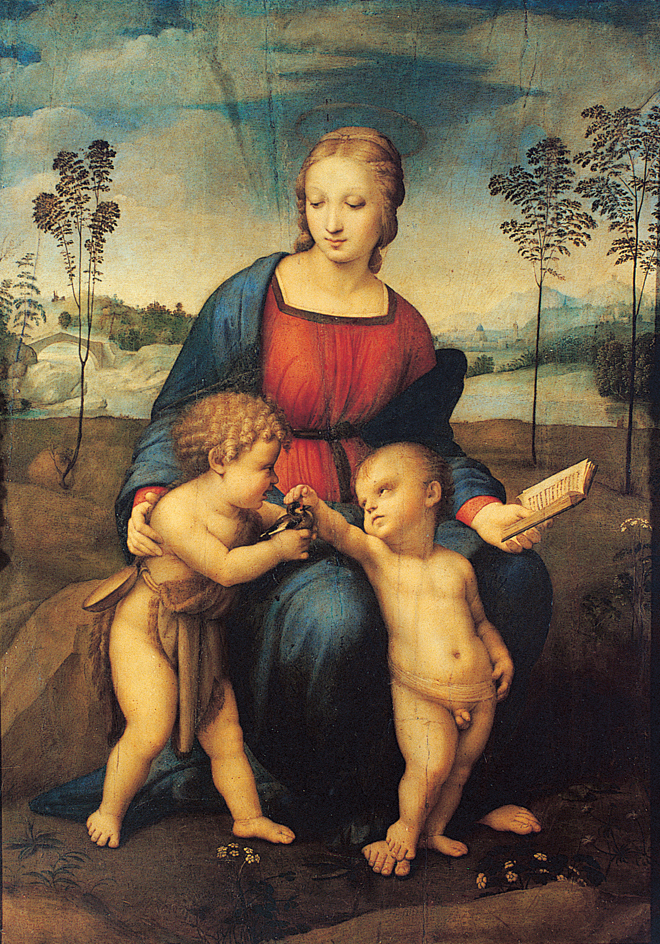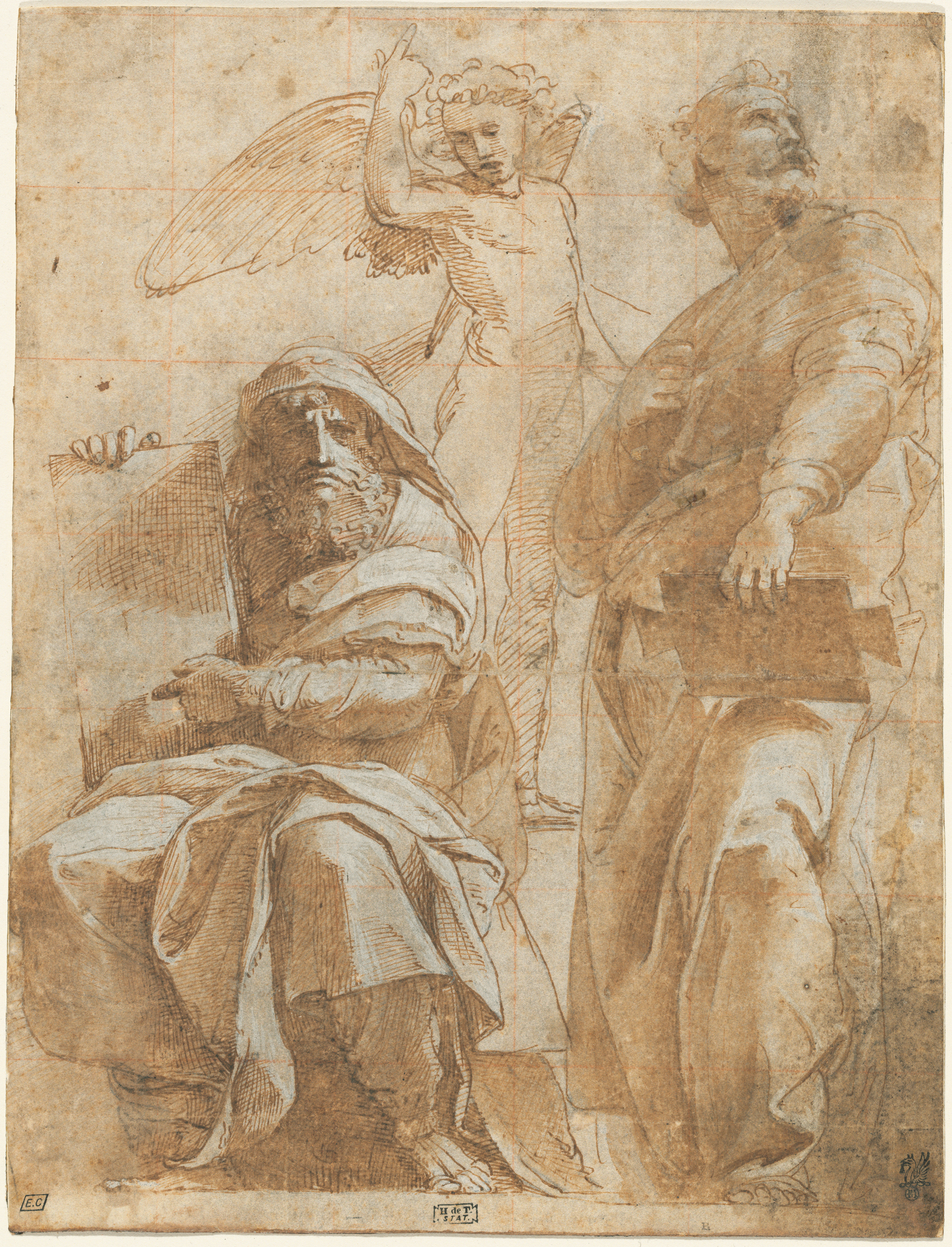Raphael, << RA fih uhl or RAY fee uhl >> (1483-1520), was one of the greatest and most influential painters of the Italian Renaissance. His graceful figures and skillful compositions influenced artists up to the early 1900’s. The period of his activity is called the High Renaissance.
Raphael painted altarpieces, frescoes (paintings on damp plaster) of historical and mythological scenes, and portraits. His most popular works include his gentle paintings of the Madonna and Child. Raphael was also an architect. From 1514 until his death, he directed the construction of St. Peter’s Basilica in Rome.

His life.

Raphael was born in Urbino on March 28 or April 6, 1483. His real name was Raffaello Sanzio. His father served as court painter to the Duke of Urbino. About 1494, Raphael went to Perugia to study with Perugino, an important painter. Perugino introduced Raphael to the latest ideas in Italian art and greatly influenced his student’s style.
Raphael settled in Florence in 1504. In Florence, Raphael studied the paintings of the great Italian artist Leonardo da Vinci. Leonardo da Vinci’s balanced compositions and idealized figures had a strong influence on all Renaissance painters, including Raphael.
Late in 1508, Pope Julius II asked Raphael to work for him in Rome. Julius wanted to rebuild and redecorate Rome to reflect its ancient glory. He gathered together the most illustrious architects, painters, and sculptors from all parts of Italy. Raphael created his finest work while in the service of Julius and his successor, Pope Leo X. With the assistance of a large workshop, Raphael produced religious paintings, tapestry designs, palace decorations, and portraits. He remained in Rome until he died on April 6, 1520, after a short illness.
His works.
A masterpiece of Raphael’s early career is the Marriage of the Virgin (1504). It shows the influence of Perugino’s sentimental style. However, Raphael’s own style can be seen in the dignified figures and the emphasis on perspective. The painting shows a gentle Virgin Mary receiving a ring from an ideally handsome Joseph.
Perhaps Raphael’s greatest achievement was the series of frescoes that decorate the pope’s private quarters in the Vatican. Raphael painted several of these frescoes in a room called the Stanza della Segnatura. Each wall in the room has an arch to support the curved ceiling. Raphael brilliantly incorporated this architectural feature into his compositions.
Raphael’s School of Athens covers one wall of the Stanza and captures the classical spirit of the High Renaissance. Three painted arches serve as a background for the ancient Greek philosophers and scientists in the front of the scene. In the center of the painting, beneath the arches, stand Plato and Aristotle, the leading philosophers. These powerful and expressive figures were influenced by Michelangelo’s paintings on the Sistine Chapel ceiling. But Raphael harmonized and clarified the arrangement of figures in space, achieving the perfect balance for which he is noted.
In his final works, such as The Transfiguration in the Vatican, Raphael began to move toward a style of greater emotion and movement that would characterize the next generation of Italian artists.
